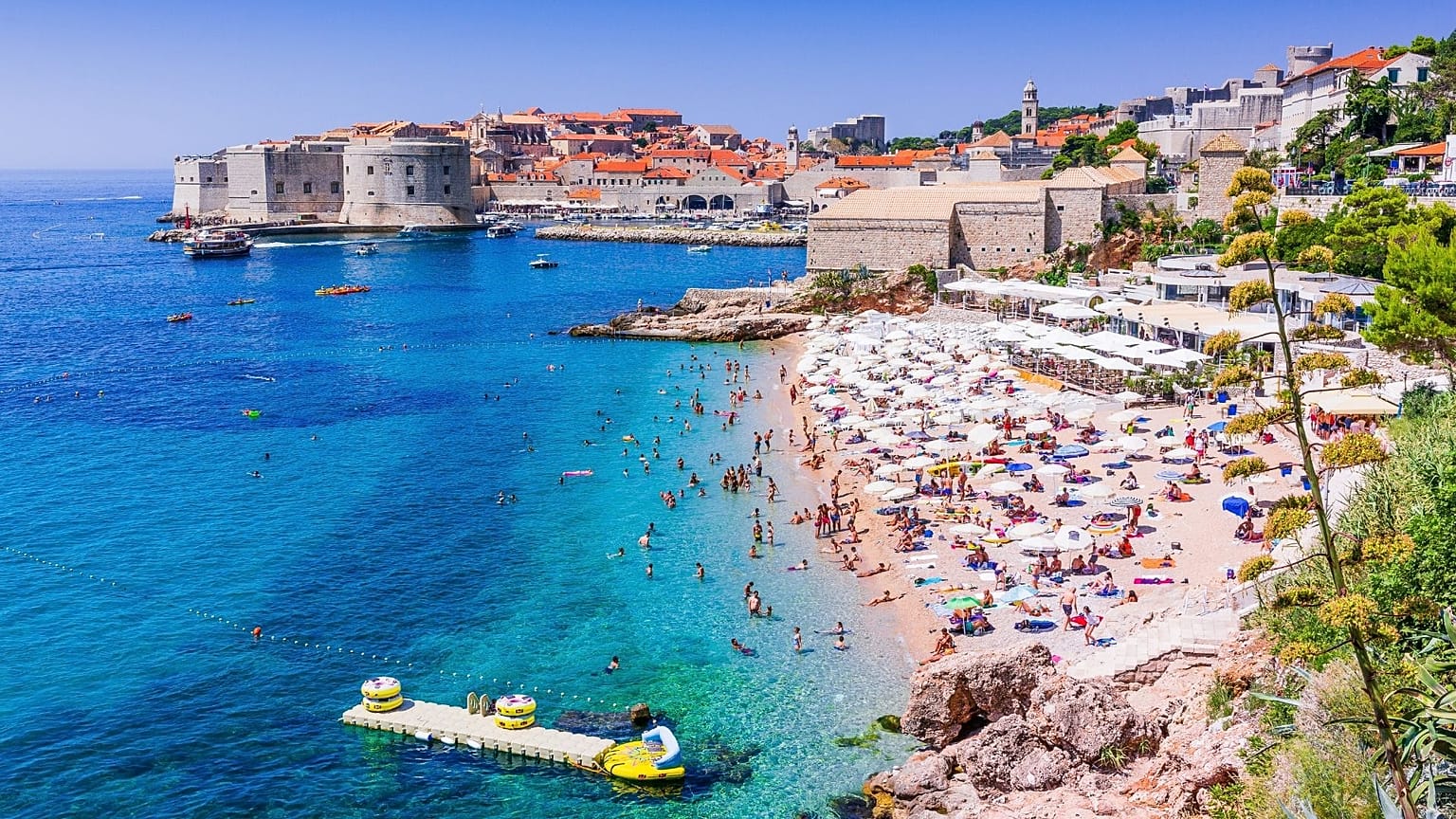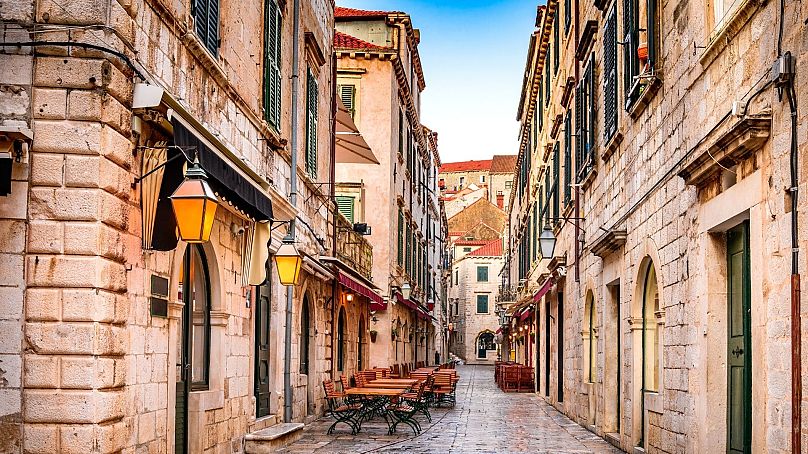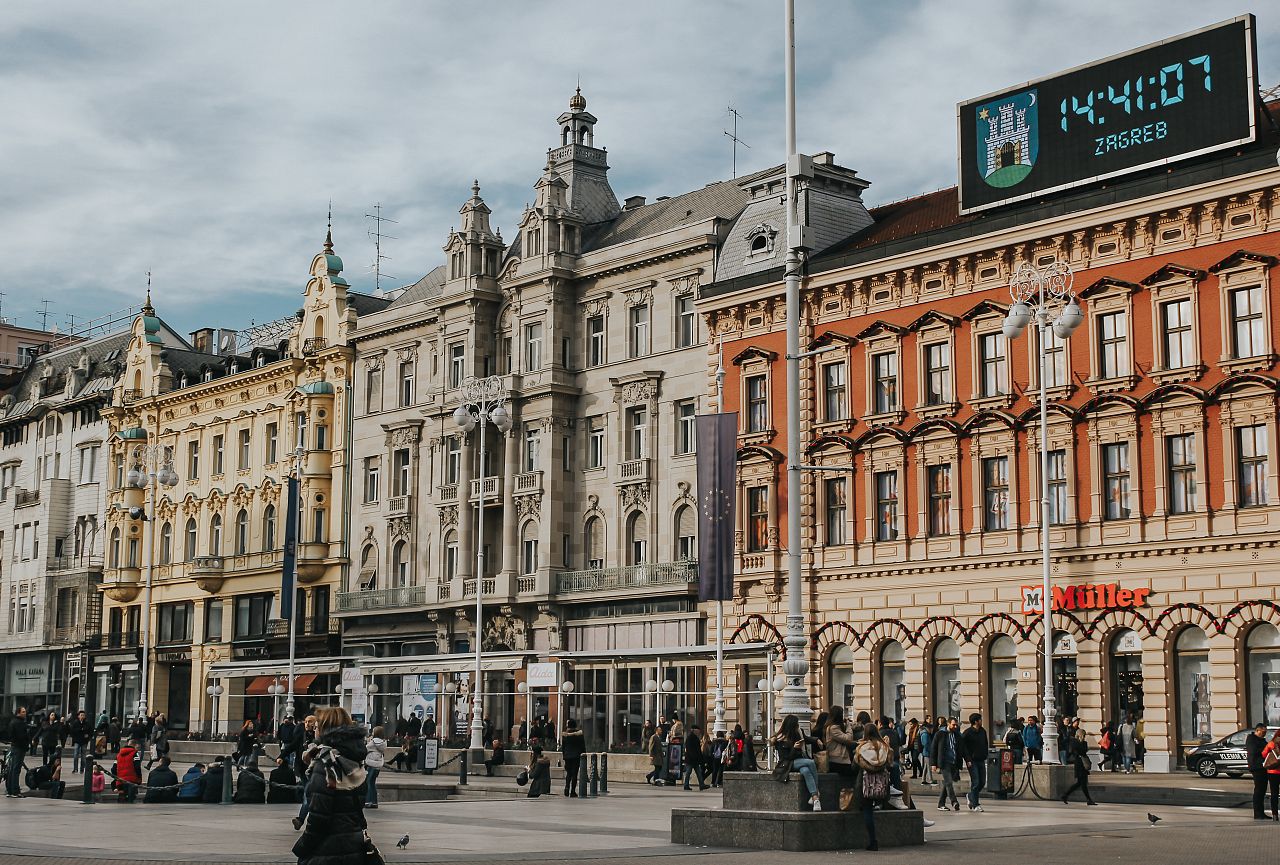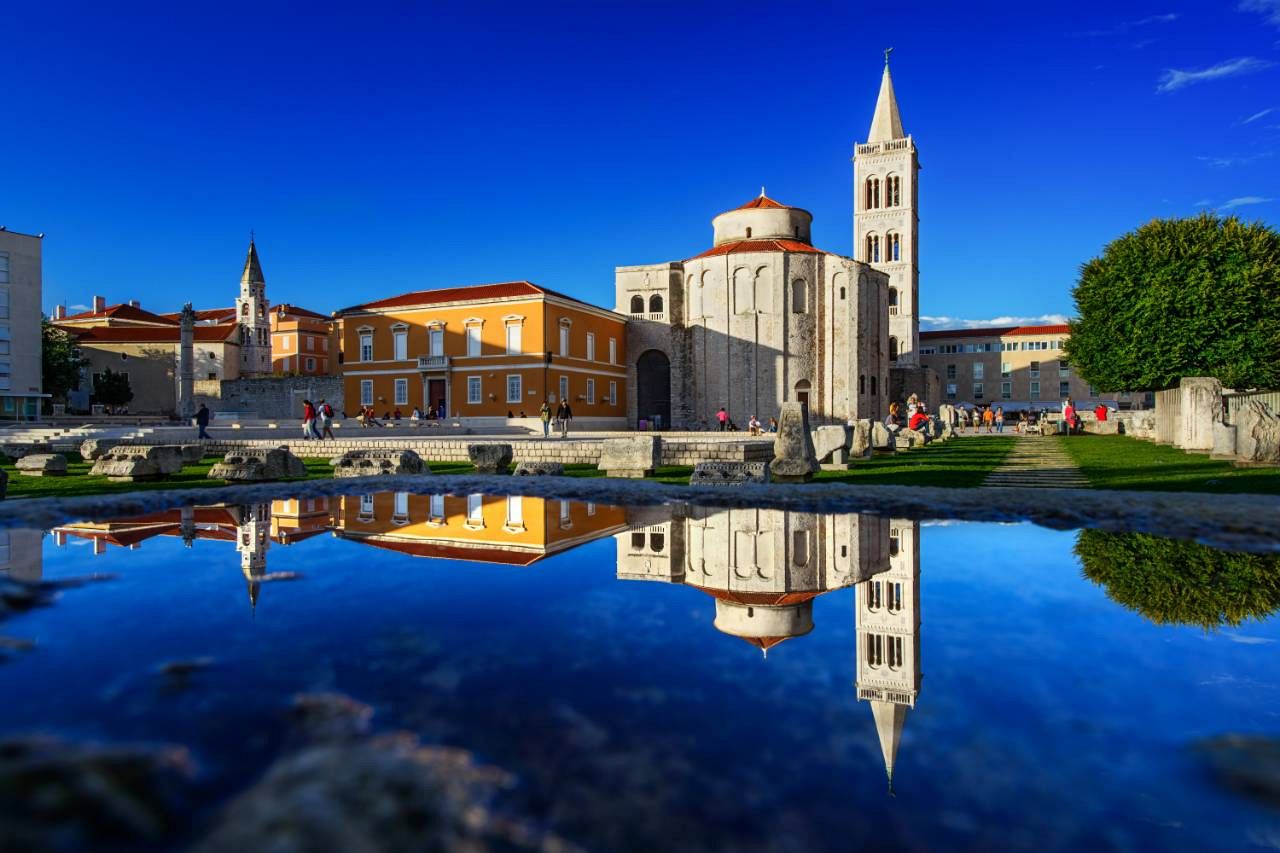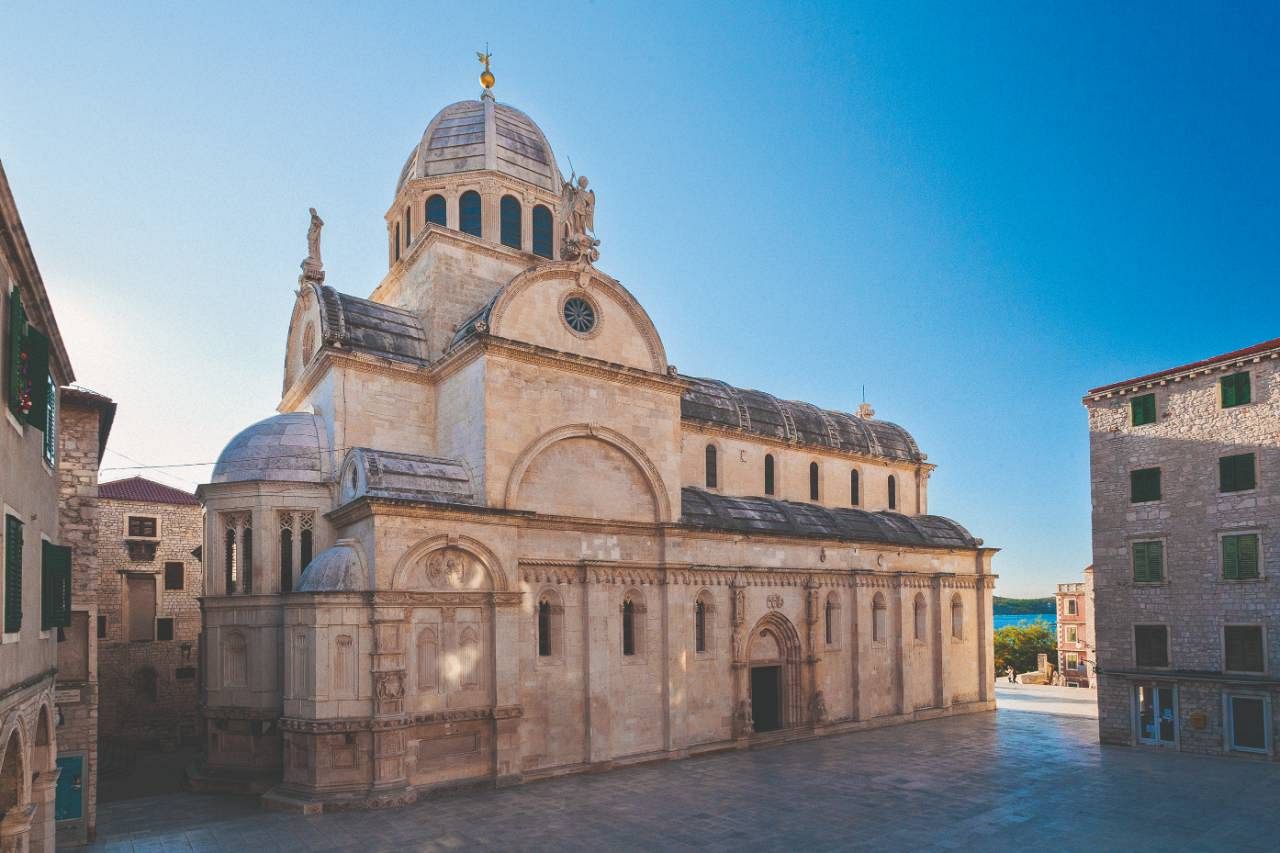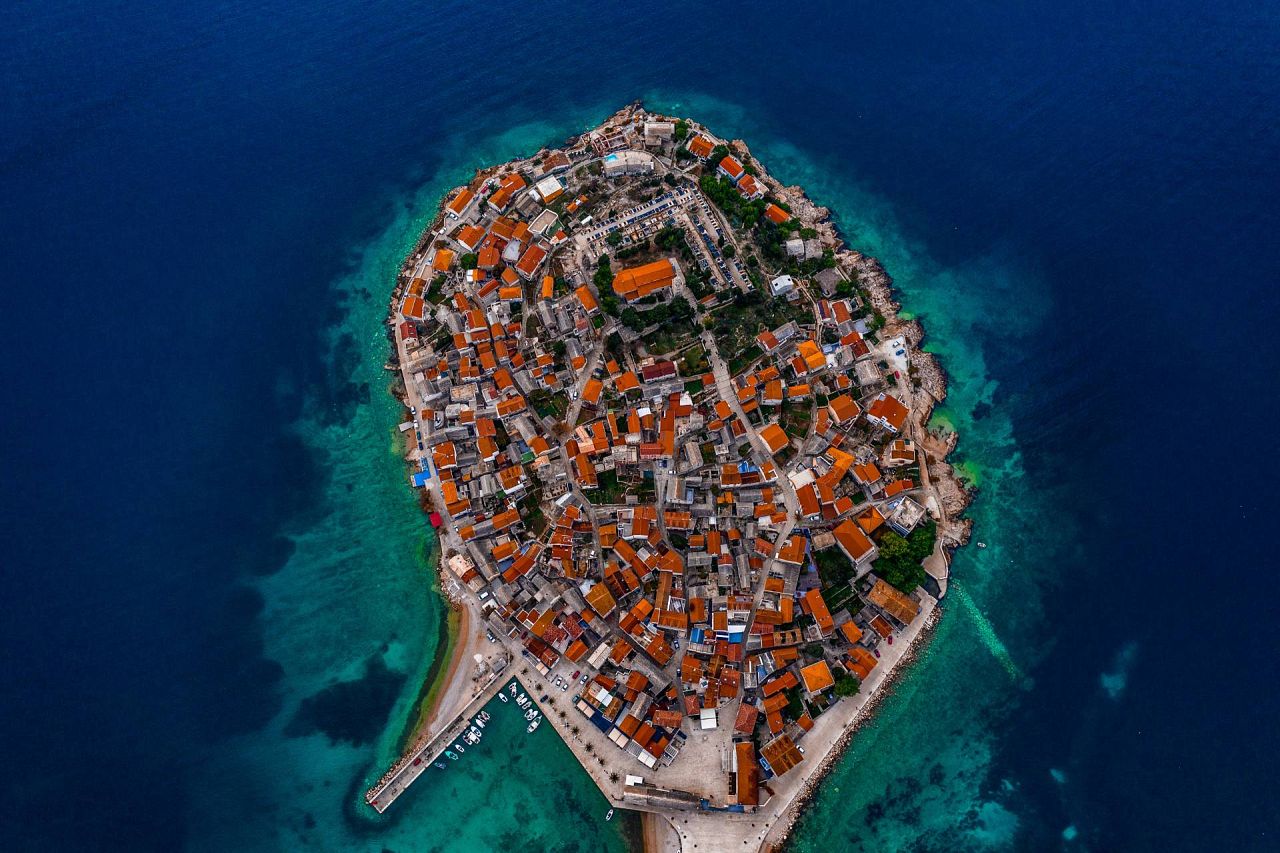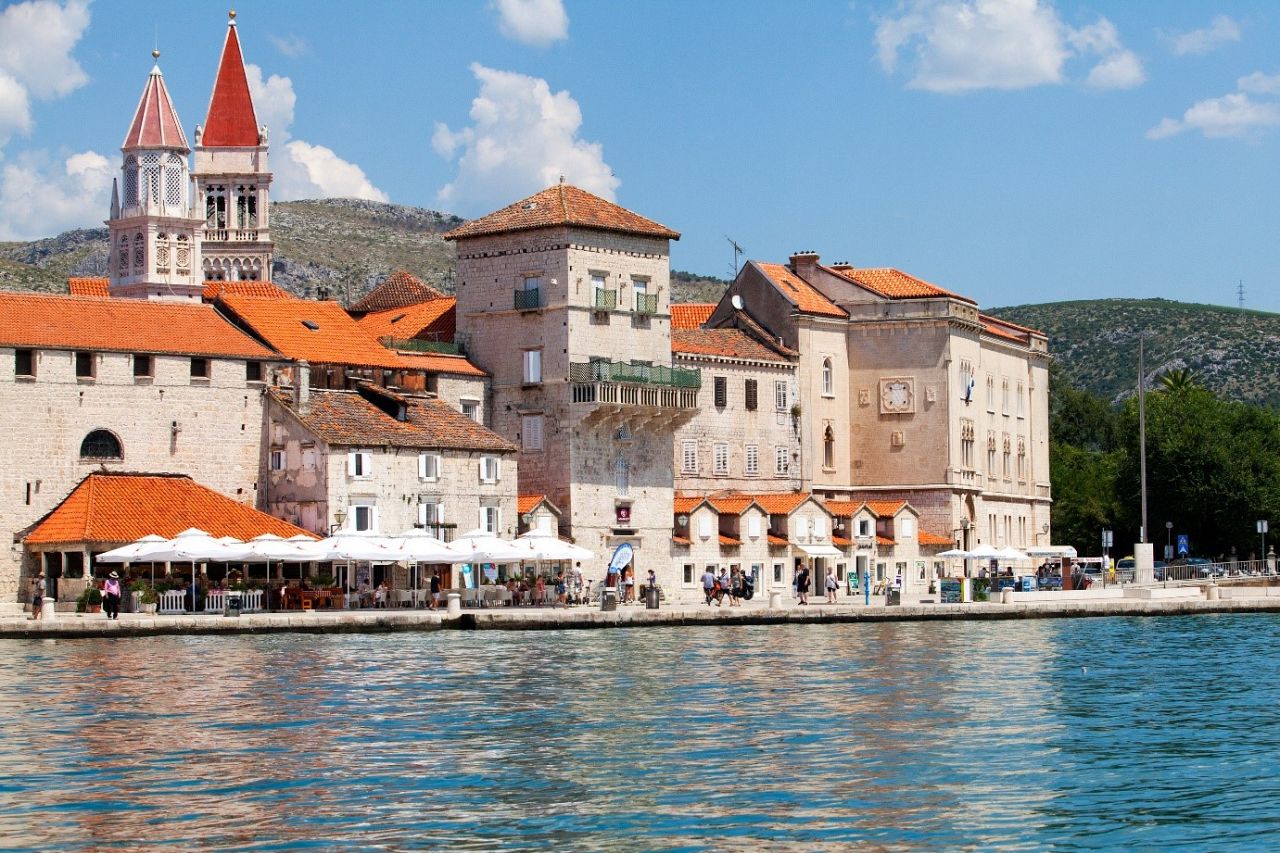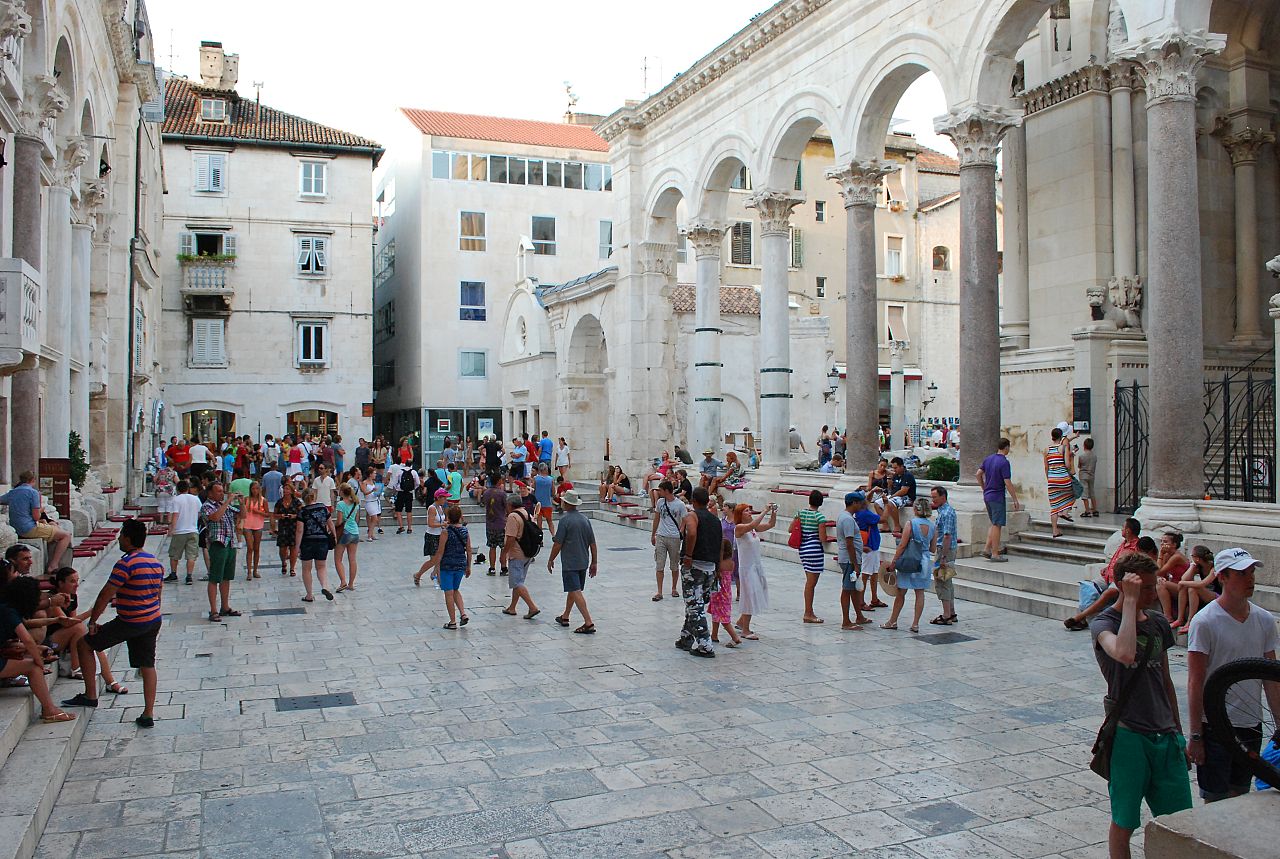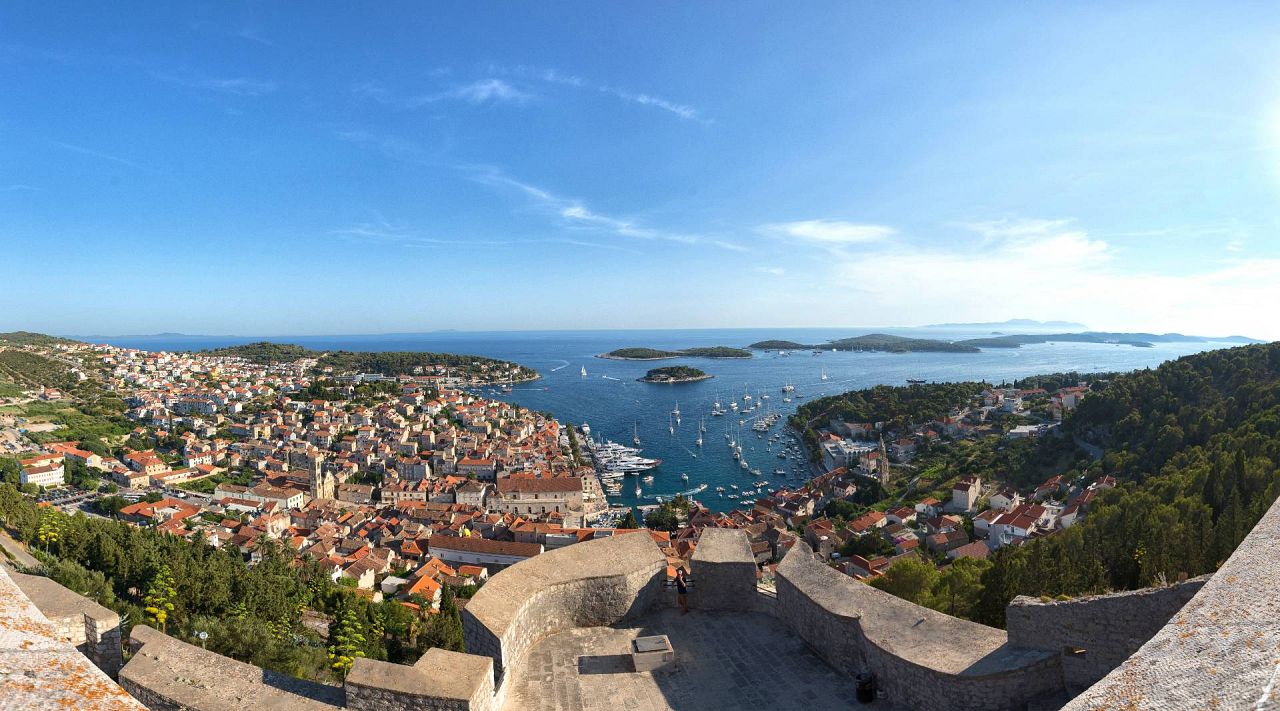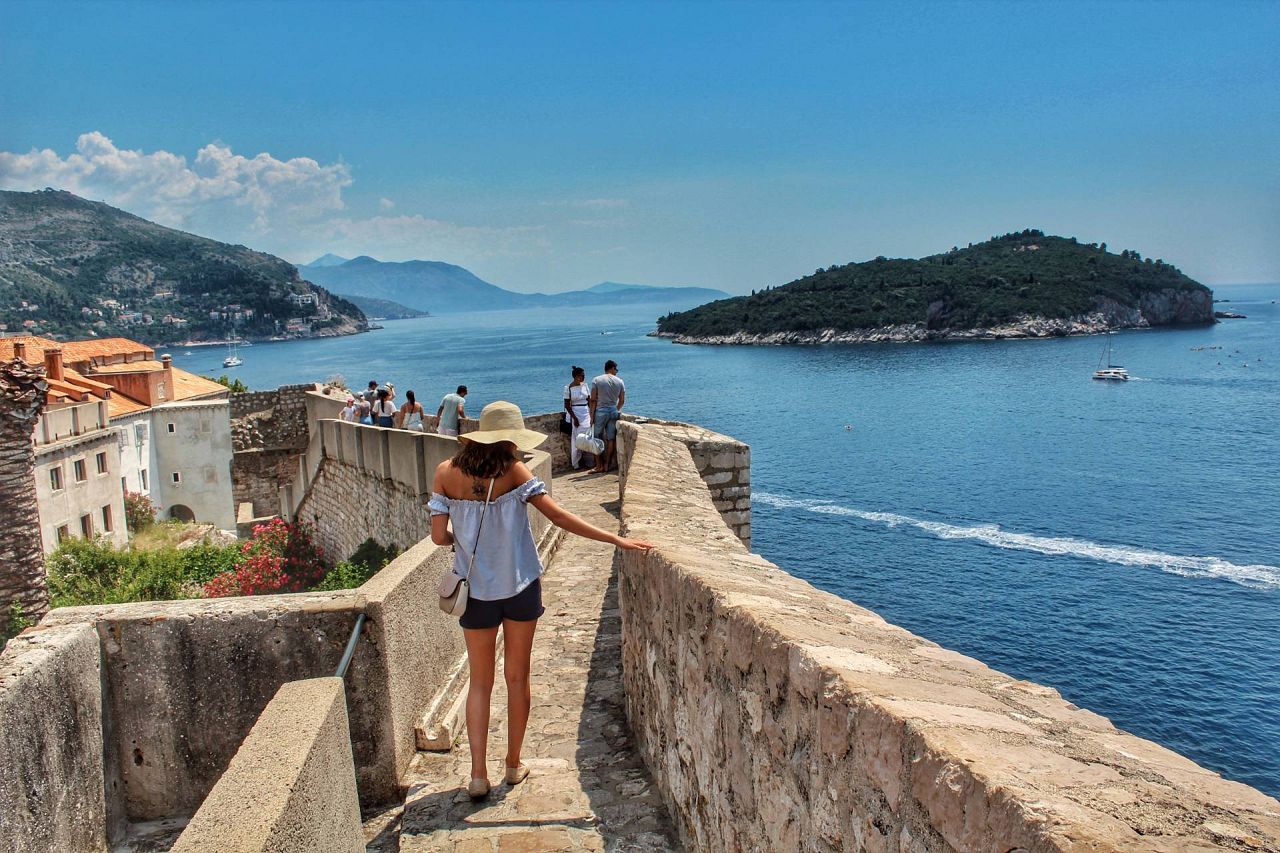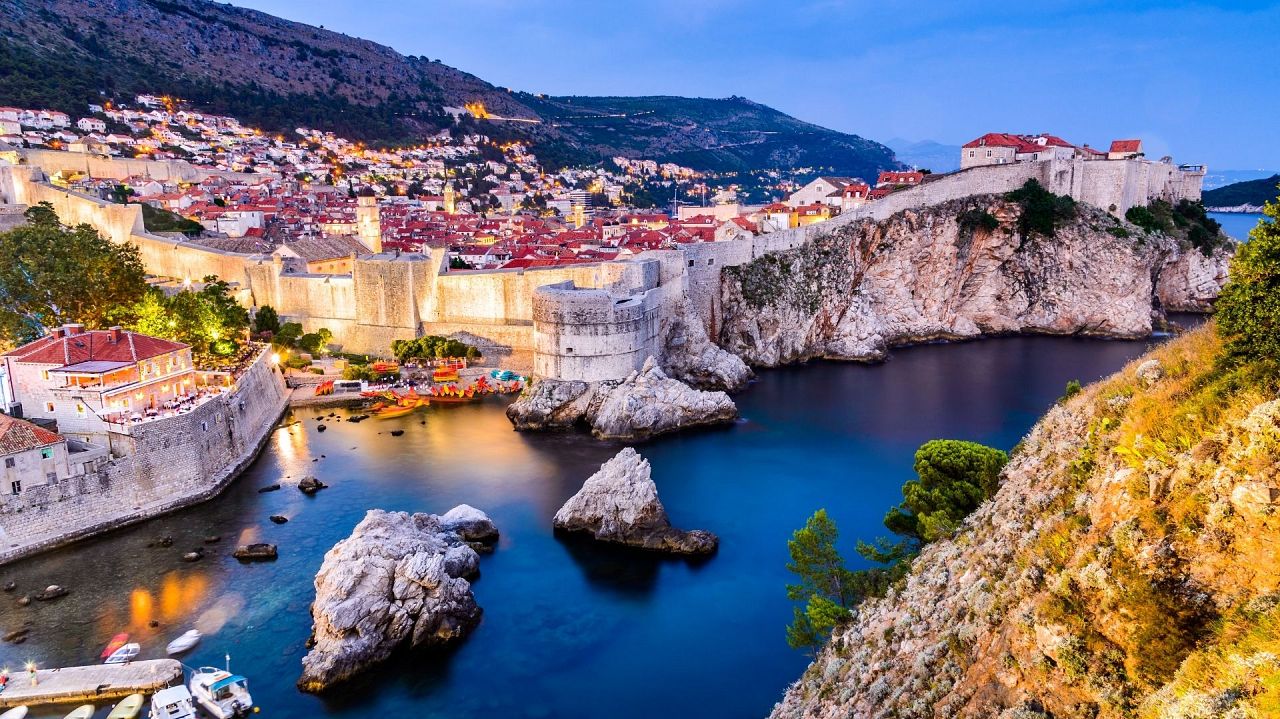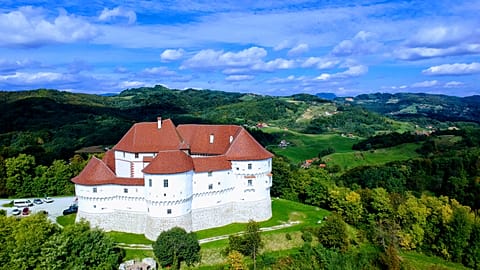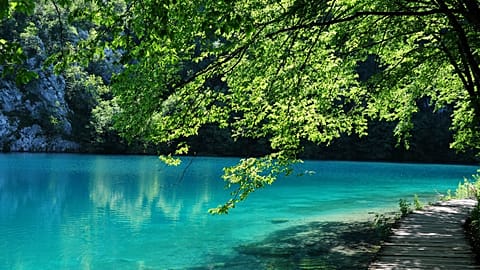From castles, churches and theatres to food, wine and music, we've put together a list of nine places you should visit to get your dose of Croatian culture.
Croatia has been a crossroads between the East and West for centuries. Once a Greek colony, later a Roman province, the country has been influenced by the Byzantines, Ottomans, Napoleon and Austro-Hungarians, to name just a few.
Croatia’s diverse and turbulent heritage has turned the nation into a true cultural jewel; its patrimony rich with influences from these periods.
From castles, churches and theatres to food, wine and music, we've put together a list of nine places you should visit to get your dose of Croatian culture.
But first of all, what are the travel restrictions?
Croatia has dropped all of its remaining COVID travel rules, as of 3 May.
“All travellers entering Croatia can now do so under the same conditions of entry that were in force before the COVID-19 pandemic, i.e. with valid travel documents,” says the statement from the Croatian National Tourist Office, released this week.
This means travellers will no longer have to show a negative COVID test result or proof of vaccination in order to enter the country.
The change comes just weeks after the country eased its restrictions about face coverings and limits on capacity for venues and public transport.
9. Rijeka, EU Capital of culture 2020
Why we love it: Rijeka has impressive neoclassical architecture, a vibrant city centre and a lively central market.
What to do: In Rijeka the mountains reach out to the sea, a juncture that brings with it an abundance of gastronomic opportunities. Head to the main city market to try it all, it’s been the place to dine since the 19th century, and it's also an Art Nouveau architectural treasure.
The city was selected as Europe’s Capital of Culture 2020.
Over 600 individual events will take place place, including exhibitions, shows, operas, conferences, concerts, festivals, and more. New cultural exhibitions are offer at the Museum of Modern and Contemporary Art, Children's House, City Museum of Rijeka and the Galeb ship-museum.
You have to try: Istria’s truffles! The nearby town is famous for its black and white fungi, which are found in Croatia’s oak forests.
8. Zagreb
Why we love it: Zagreb is a reflection of the Austro-Hungarian empire.
What to do: You can visit most of Zagreb by foot. Go see the Neo-Gothic Zagreb Cathedral, it is an iconic landmark, same for Saint Mark’s Church, one of the oldest buildings in the city.
Zagreb claims to have the most museums per capita, so you probably won’t have time to visit them all but don’t miss Mimara, the city’s famous fine arts museum and the Zagreb City Museum, to absorb the capital’s history.
You can walk around Tkalčićeva Street, which has been one of the most vibrant streets in the city for centuries, and then stroll around Bogovićeva Street, a great place to people-watch while enjoying a good cup of Croatian coffee.
The country is famous for its coffee, olive oil, and wine.
As the capital city, Zagreb is the place to find a variety of regional cuisines. Try them all at the city’s central market, called Dolac. Elsewhere, look out for the traditional “konoba”, an informal trattoria-style restaurant offering local delicacies.
You have to try: Grenadir Marša, a tasty pasta dish with onions and cheese; Kajzeršmarn, an original dessert with caramelised pancakes; the local cheese-stuffed pastries, Štrukli, and the famous pepper biscuits.
Bonus: If you happen to visit during late spring, you will likely bump into ‘Cest is d' best’ one of many street festivals which transforms the city into a big stage with street theatre, music, performances and sports.
7. Zadar
Why we love it: You can explore 3,000 years of history in Zadar.
What to do: Walk the ancient city by foot to discover its diverse monuments. Start with the Church of St Donatus, it dates from the 9th century and is the largest pre-Romanesque structure in Croatia. Today it mostly serves as a venue for medieval renaissance music, look out for the programme at the local tourism office. The Cathedral of Anastasia, constructed in the 12th and 13th century, is also worth the visit.
Zadar was once the largest city-fortress in the Republic of Venice, and its walls are another landmark. They formed, along with other cross-border components, the Venetian Works of Defence between the 15th and 17th century, which are recognised on UNESCO’s World Heritage List as an outstanding monument of the modern maritime fortification scheme.
From there head to the Land Gate, the main historical entrance to the city, built in 1543. It is considered one of the finest Renaissance monuments in all of Dalmatia.
You have to try: The world-famous Maraschino cherry liqueur, a centenarian recipe only made locally from indigenous Marasca sour cherries; the cheese from Pag, the most highly-prized cheese in Croatia, infused with the flavours of the Mediterranean and soaked in olive oil; The brodet, a fish and crab stew.
6. Sibenik
Why we love it: Historic Sibenik has two UNESCO sites.
What to do: The first UNESCO-listed landmark is St James’ Cathedral, a basilica from the 15th and 16th century. It is praised for its fusion of Gothic and Renaissance art.
Croatians feared invasion from the Ottomans for centuries, so the city of Sibenik had four fortresses, the most formidable being St Nicholas (Tvrđava Sv Nikole) whose defensive architecture is also protected by the prestigious UNESCO World Heritage.
While in Sibenik take a stroll to the Medieval Mediterranean gardens, landscaped by award-winning architect Dragutin Kiš. They are located around the former St Lawrence Monastery, which is also worth a visit. Gardens are open year-round, and they often host open-air events in summer.
Dalmatian traditional dishes are another good reason to visit the city, head to a seaside taverna to enjoy a fine glass of wine, Sibenik is the country’s primarily wine producing area.
You have to try: Crni rižot, a black risotto with squid, served with grated cheese.
5. Primošten
Why we love it: An island in its past life, Primošten has preserved the architectural features of a medieval Mediterranean fishing village.
What to do: About five centuries ago, during the Turkish invasions, the inhabitants of the islet built walls, towers and a bridge connected to the mainland to protect the city. When the Turks retreated, the bridge was replaced by a causeway.
The city is worth a visit just for its Croatian seaside village atmosphere.
Start at the Old Town Gate, the stone remnants of the old walls. Then head uphill and visit the parish church of St. George, built in the 15th century, to profit from the unique view of the sea.
Primošten is another great town to try Dalmatian cuisine, especially the outstanding red Babić wine, paired with goat cheese, prosciutto and olives—all native to Primošten.
You have to try: A shot of Rakia, another local speciality, a fruit brandy popular in the Balkans.
4. Trogir
Why we love it: It is famously known as a ‘town museum’.
What to do: Trogir is said to be one of the most preserved Romanesque-Gothic towns in Central Europe. The historic city centre is under the protection of UNESCO.
Head to the beautiful Romanesque-Gothic churches, notably the Cathedral of St. Lawrence, and to the Kamerlengo medieval fortress, built by the Venetians in the 1400s.
The fortress is also used as a venue for a wide range of concerts, festivals, performances and open-air cinema screenings during the summer. Check the local tourism office!
You have to try: Pasticada, a sort of beef stew, and one of the most popular Dalmatian dishes, every family has its own recipe.
Bonus: Attend a UNESCO-listed Klapa performance at the town’s loggia. The traditional singing group typically includes two tenors, a bass and a baritone, performing a cappella songs to celebrate love, wine, the homeland and the sea.
3. Split
Why we love it: A historical jewel with its old town and the 1,700-year-old Diocletian palace.
What to do: The ancient city centre is like stepping back in time. First head to the Diocletian palace, UNESCO-listed, it’s an amazingly-well preserved 4th-century complex. Then don’t miss St Duje’s Cathedral, once the Diocletian’s mausoleum. The central portion of the structure dates to 350AD, making it one of the oldest cathedral buildings in the world.
Peristil Square should also be on your list, an original Roman court where you can admire the great architecture of old Split. The stone monuments around it have given the square great acoustics, lookout for operas and theatre performances during the summer.
You’ll surely get lost in the old town, a maze of cobblestoned streets surrounding the Diocletian palace but make sure to find your way to People’s Square and gaze up at the old town clock. You can end your day with a stroll along the Riva Promenade, the harbour of Split to find a spot to eat: Split has a booming culinary scene and is designed for Al Fresco dining.
You have to try: Soparnik, one of Croatia’s authentic traditional dishes, a savoury thin pie filled with Swiss chard.
Bonus: If you visit in August don’t miss another UNESCO-honoured event: Sinjska Alka, an equestrian tournament that has been taking place in Sinj (about 45 minutes away from Split) since 1717.
2. Hvar and Stari Grad
Why we love it: Hvar has been inhabited since prehistoric times.
What to do: Hvar’s location at the centre of the Adriatic sailing routes has turned the island into a prosperous centre of arts and culture. The city is home to Hvar Public Theatre, one of the first theatres in Europe, which is now back in business after more than 20 years of restoration.
The cultural treasure is open for visits and there are ongoing performances all-year-long. See the Hvar Tourist board for the latest programme.
The ancient Greeks also founded the colony of Pharos in 384 BC on the northern side of the island, making todays’ Stari Grad one of the oldest towns in Europe. They set out the agricultural landscape of the Stari Grad Plain, a landmark that exhibits the ancient geometrical system of land division used by the Greeks, it has remained almost intact for over 24 centuries. This is also a UNESCO World Heritage Site.
You have to try: Gregada, a simple fish stew with potatoes, is said to be the oldest way to cook fish in Dalmatia, probably brought by the Greeks. Also try the Octopus salad, a classic in the country and a speciality in Hvar. Pair it with Bogdanuša wine, a white grape indigenous to Hvar.
1. Dubrovnik
Why we love it: It’s called the Pearl of the Adriatic for a reason.
What to do: Surrounded by fortresses, Dubrovnik offers architectural and cultural masterpieces preserved for centuries. Start walking at the monumental Pile Gate, located at the top of Stradun, the splendid main pedestrian street of the old town.
Visit the cathedral, built on the ruins of a 12th-century church and take a stroll around the city’s limestone streets to admire the baroque buildings. Later, at dusk, climb the stairs to the city walls to get a view of the old town and sea from above while watching the sunset over the Adriatic. You’ll soon see why the city was used as the backdrop for multiple scenes of the mythical medieval series 'Game of Thrones'.
Dubrovnik’s cultural scene is abundant with festivals, open-air concerts, gardens, performances and exhibitions, with many historic venues, such as the atrium of Sponza Palace, hosting the events.
During the summer the cultural highlight is the Dubrovnik Summer Festival, the city becomes a big stage for theatre performances, jazz, ballet and concerts. The Dubrovnik Symphony Orchestra is also worth following, they organise year-round concerts and seasonal events.
You have to try: Zelena Menestra, or the green stew, a dish that’s been around since the 15th century. It consists of smoked bacon and ham hock, homemade sausages, cabbage, potato and often other vegetables. Also, try Rožata, a traditional medieval dessert from Dubrovnik, similar to crème brulée with a very special addition: rose water or rose petal liqueur.
















